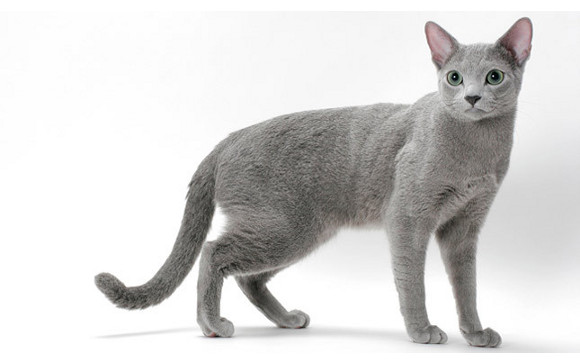Introduction
The Russian Blue cat breed, renowned for its striking beauty and gentle nature, is a favorite among cat enthusiasts. This guide delves into the breed’s history, characteristics, care needs, and suitability as a pet.
History of the Russian Blue Cat
The origins of the Russian Blue cat are shrouded in mystery and legend. The most widely accepted theory is that British sailors brought these cats to Great Britain in the 1860s from the Russian port town of Arkhangelsk. Their dense, thick coats suggest they developed in a cold climate, supporting this theory. Despite the lack of concrete evidence, it is believed that blue shorthairs similar to the Russian Blue still exist in Russia today.
In 1871, the Russian Blue made its first appearance at a cat show at London’s Crystal Palace, known then as the Archangel Cat. Initially, Russian Blues competed against other shorthaired blue cats but struggled to win due to the preference for the British Blue’s round-headed, cobby appearance. It wasn’t until 1912 that the Russian Blue was granted its own class by the Governing Council of the Cat Fancy.
The breed faced near extinction during World War II. However, dedicated breeders in Britain and Scandinavia worked tirelessly to revive it. British breeders crossbred Russian Blues with bluepoint Siamese and British Blues, while Scandinavian breeders used blue cats from Finland and Siamese cats to enhance the breed’s characteristics.
In 1965, British breeders aimed to restore the breed’s original look, leading to a revised show standard in 1966 that discouraged the Siamese type. By combining the Scandinavian cats’ good head type and vivid green eyes with the British Russian Blues’ silver-blue coat and graceful body, breeders achieved the consistency seen in today’s Russian Blue cats.
Appearance and Characteristics
The Russian Blue cat is known for its elegant appearance and unique features. Key characteristics include:
- Coat: The most distinctive feature is the double coat, which is silky, plush, and dense, standing out from the body. The guard hairs have a silver tipping that reflects light, giving the coat a silver sheen.
- Eyes: Russian Blue cats have vivid green eyes that contrast beautifully with their coat.
- Body: They have a graceful, svelte body with a moderate foreign type.
- Expression: The slight upturn at the corners of their mouth gives them a perpetual smiling appearance.
Personality and Temperament
Russian Blue cats are known for their gentle, reserved nature. Key personality traits include:
- Affectionate: While they may be shy around strangers, they are affectionate and playful with their trusted humans.
- Active: They are active and enjoy engaging in playful activities like chasing toys or sunbeams.
- Independent: Russian Blues can entertain themselves but prefer the company of their favorite humans.
- Quiet: They are polite and well-behaved, making them easy to train and a delight to have around the home.
- Routine-Oriented: They thrive on routine and dislike environmental changes, especially disruptions to their meal schedule.
Care and Maintenance
Taking care of a Russian Blue cat involves the following considerations:
- Grooming: Despite their short coat, the dense double coat requires regular grooming to keep it looking its best. Brushing once or twice a week is usually sufficient.
- Litter Box: They are fastidious about their litter boxes and expect them to be kept clean at all times.
- Diet: A balanced diet with high-quality cat food ensures they remain healthy and active.
- Exercise: Providing ample opportunities for play and exercise helps keep them physically and mentally stimulated.
Health and Lifespan
Russian Blue cats are generally healthy and hardy, with a lifespan of 15-20 years. Regular veterinary check-ups and preventive care can help maintain their health. Common health issues to watch for include:
- Obesity: Due to their love for routine and food, they may be prone to weight gain if not properly managed.
- Dental Health: Regular dental check-ups and cleanings are essential to prevent dental issues.
Suitability as a Pet
Russian Blue cats make excellent pets for various households due to their adaptable nature and endearing personality. They are good with children and other pets, making them a great addition to families. Their quiet, gentle demeanor also makes them suitable for apartment living.
Conclusion
The Russian Blue cat breed is a captivating blend of beauty, elegance, and gentle temperament. With proper care and attention, they can be loving and loyal companions, bringing joy and charm to any home. Whether you are a seasoned cat owner or a first-time pet parent, the Russian Blue’s striking appearance and delightful personality are sure to win your heart.
For more information and detailed guides on various cat breeds, visit Cat Place.

